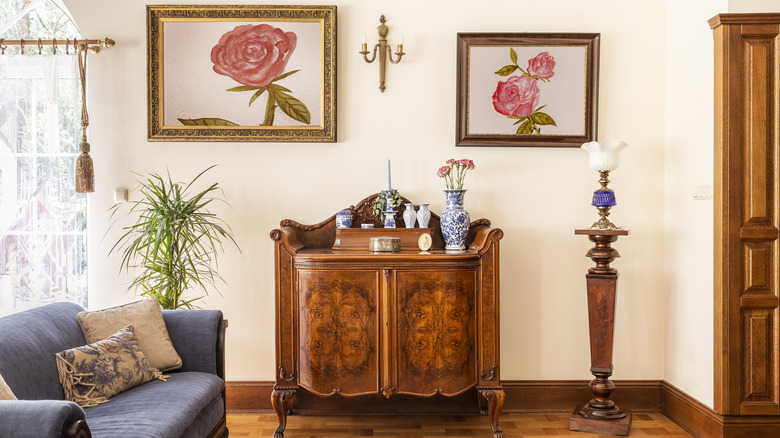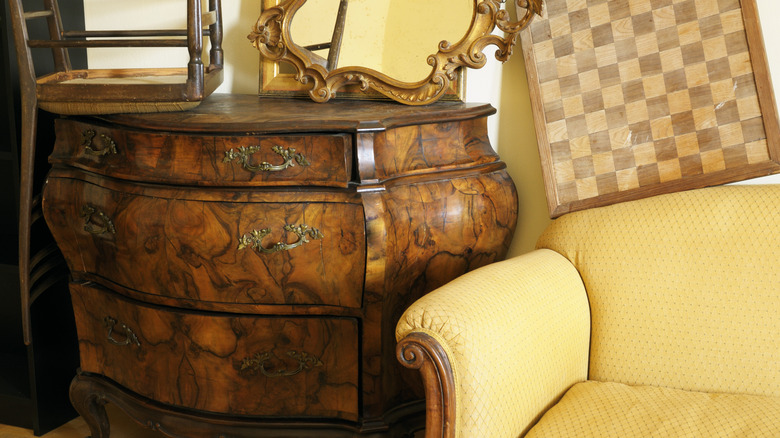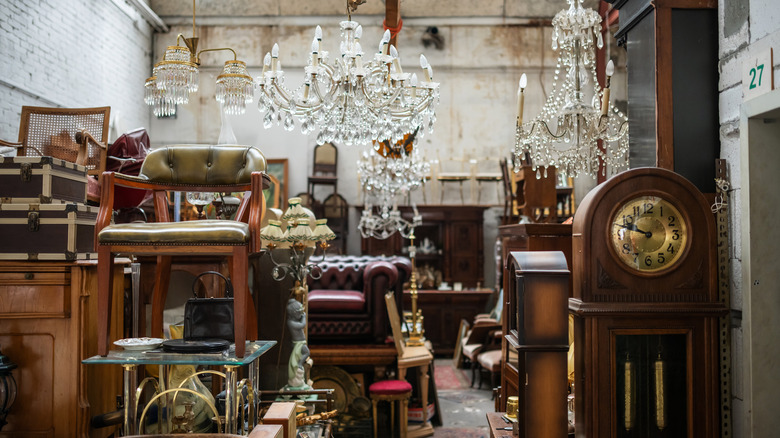Tips To Determine If You're Paying A Fair Price For Vintage Furniture
In a world of flat-pack furniture and plywood pieces that assemble in 15 minutes, vintage furniture provides a little more personality and unique flair to your home. An ornate wooden hutch or a Victorian dining set can transform any room and help it take shape. A few of the right pieces and the room you're decorating will feel original, whether you're mixing modern and vintage furniture or fully embracing an old-world look. But when you're shopping around, it can feel overwhelming. How do you know if a piece is worth purchasing, and what makes it valuable over the other old-looking item next to it?
It doesn't help that the pricing of vintage furniture often doesn't match up or work the same as the pricing structure of modern furniture. This can lead to overpaying, accidentally purchasing fakes (there are some obvious signs), and overall, a lot of disappointment. To understand if you're getting the best possible price, you'll need a little insight into the furniture piece itself. The worth of a vintage comes down to a couple of different factors: the time period that it hails from (and if it's authentic, of course), its condition, and the material it's made of.
Dive into the specifics
If you're interested in one era or period, start researching specifics. For example, an item that falls under the Chippendale category will be different from something of the French Restoration period — both will have unique characteristics. Figure out what hallmarks are usually found on these pieces, if there are any special details or markings that prove authenticity, and what indicates a worthy piece of furniture from this time over one that doesn't hold much value. Particular types of wood and fabric are also tied to certain periods. Just remember that old doesn't always equate to expensive or high-value, though the condition of the piece will definitely affect its worth.
Having a grasp on the aforementioned features will set you up for success when it comes to finding pieces that fit your style and budget needs. You won't be left in the dark when it comes to negotiating and you'll feel more confident about finding the best deal.
Get an expert opinion
If you have your eye on a major investment piece and aren't well-versed in the world of vintages, it's a smart idea to speak with an expert who can determine if you're getting the best price. Appraisers have a wealth of knowledge, and some even specialize in particular types of vintages or specific eras. They'll educate you on what to look out for and will likely have connections in the industry. Post-purchase, professionals can even give you pointers on how to clean and restore your furniture without hurting its value in case you'd like to sell it down the road.
It's also worth noting that when you're swept up in the excitement of shopping for vintages and trying to haggle down the price, it's easy to forget that the seller also needs to make a profit. Most buyers aren't scooping up vintages from big-box retailers, and these smaller businesses need to make a living, too. This doesn't mean you have to cut negotiating out completely. But keep in mind that just because you won't get the mega discounts you might be used to seeing from large brands, doesn't mean you won't be getting a great deal.


